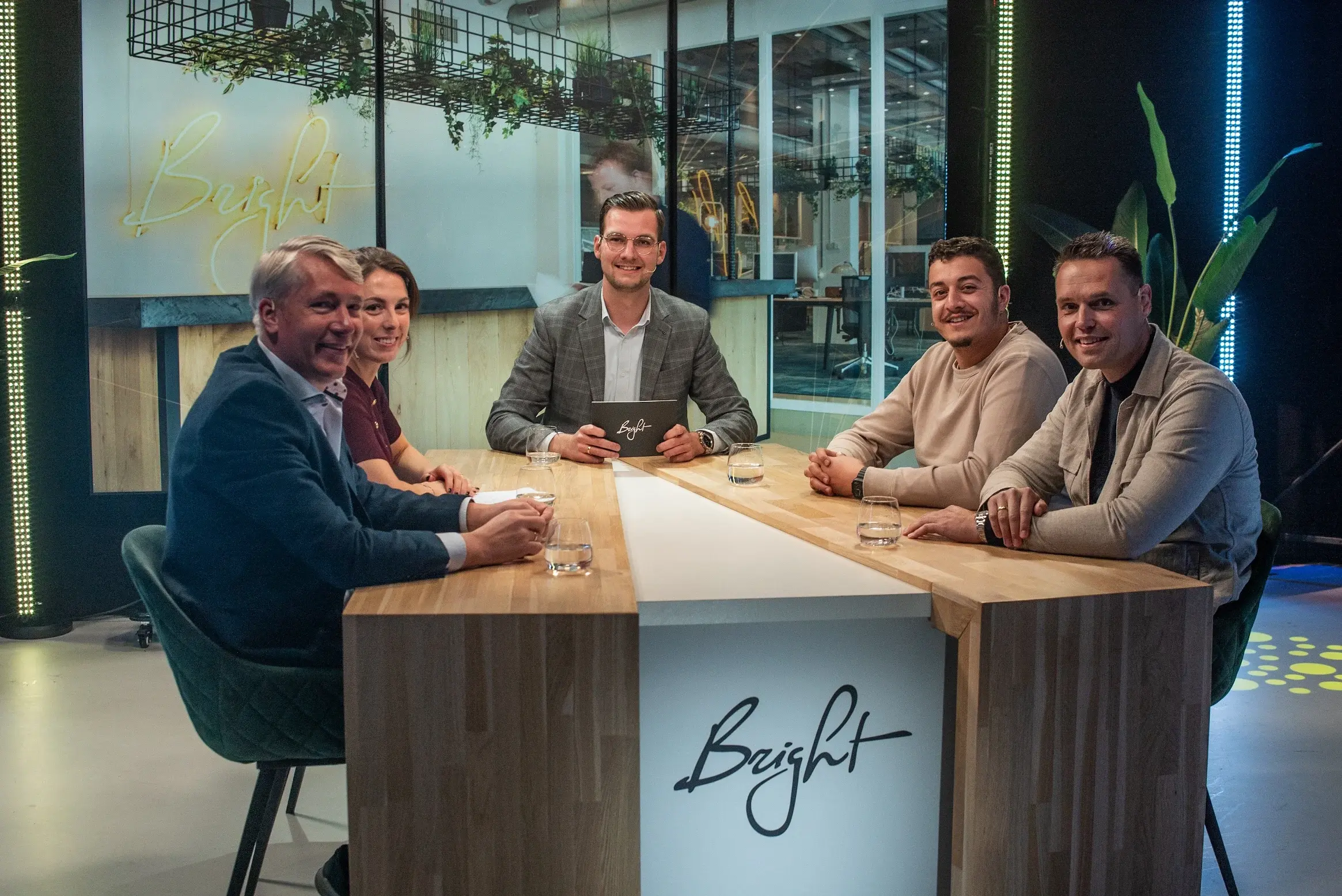Every year, HubSpot INBOUND is the time when marketing, sales and service professionals come together to discover where the future of digital growth is headed. This year, the event took place in San Francisco. At Bright Digital, we were right on top of it. In our talk show "The Afterthought on INBOUND25," our specialists discussed the most important trends, innovations and product launches. In one hour, we took viewers through the most impactful changes within HubSpot, AI and marketing strategy.
The energy of INBOUND25
"It was intense, but mostly inspiring," says Henry, CEO of Bright Digital. "The atmosphere, the meetings with HubSpotters, partners and customers.... Everywhere you felt the drive to innovate." HubSpot packed big in San Francisco with more than 200 product updates and a clear message: AI, data and customer-centricity are growing ever closer together.
The common thread? AI. Not as a gimmick, but as a strategic tool. HubSpot is transforming itself from CRM platform to full-fledged AI-driven business platform. With the introduction of Breeze Studio, HubSpot is setting a new standard: users can now build their own AI agents that perform tasks independently, such as data analysis, content creation or customer interaction.
The main themes of INBOUND25
1. AI: driving growth and efficiency
AI was the overarching theme of INBOUND25. HubSpot shows that artificial intelligence is not just something for tech companies, but a practical tool for every marketer, sales manager and service professional.
The new AI features help teams work smarter: think automatic content generation, AI-assisted reporting and predictions within the Sales Hub.
Fenna puts it nicely, "AI within HubSpot is not about replacing, but enhancing. It takes over repetitive tasks so you have more time for strategy and creativity."
Head of Innovation & AI Aimane tested Breeze Studio before its official launch: "It's revolutionary. You can give AI agents instructions, link them to your own data as well as web resources, and then let them work independently within your commercial processes."
According to him, the real power lies in the cooperation between humans and AI: "Don't see AI as a replacement, but as a colleague. An agent takes over repetitive tasks, leaving you more time for strategy, creativity and growth."
2. Data Hub: the new standard for smart integrations
Another notable update: Operations Hub has been renamed Data Hub. This shifts the focus from automation to data quality and application. Bright consultant Teun demonstrated in the talk show how the new Data Studio works: "You can now directly link external data sources, such as Google Sheets or Salesforce, to HubSpot and enrich them with smart formulas and AI agents. Without IT intervention."
The message is clear: It's no longer about more data, but about making better use of the data you already have. Thanks to the Data Hub, marketing and sales teams can move faster, optimize campaigns and translate insights directly into actions.
3. Loop Marketing: the new playbook for modern marketers
In addition to AI and data, HubSpot also announced a new marketing philosophy: Loop Marketing.
Marketing consultant Klaas explains: "Where the funnel and flywheel revolved around linear steps, Loop Marketing revolves around a continuous cycle of expression, activation, optimization and evolution. Humans remain in the lead and AI accelerates."
In short, brands need to get back to their core, stay true to their identity, and deliver that message consistently across all channels. AI helps with that, but authenticity remains the deciding factor.
Marketing strategist Fenna adds: "Consistency is crucial. Those who don't have a sharp sense of what the brand stands for get snowed under in generic AI content."
3. From SEO to E-E-O: findability in the AI age
Another big theme at INBOUND25 was the shift from SEO (Search Engine Optimization) to EEO (Everywhere Engine Optimization). Whereas Google was the dominant search engine for years, users are now increasingly searching directly through AI models such as ChatGPT, Gemini and Perplexity.
"The old 'googling' doesn't work like it used to," says Fenna. "We're moving from keywords to demand-driven conversations. That requires a different content strategy." So it's no longer just about keywords, but about context, authenticity and authority. Companies must ensure that their brand story and expertise are recognized even in these AI-driven search environments.
4. CPQ: simplicity in complex proposal processes
During INBOUND25, Henry deliberately attended the session on CPQ (Configure, Price, Quote). Not without reason. He notices in customer conversations that more and more organizations need a more sophisticated way to put together quotations and contracts. "There is a lot of demand for more flexibility in the quotation process," Henry says. "HubSpot already had a quote module, but with this new version everything has been rebuilt: more user-friendly, smarter and visually much stronger."
The new CPQ functionality allows dynamic configuration of products, prices and bundles. Where previously it was mostly about single line items, teams can now manage complete product combinations and pricing structures, including approval rules and margins.
"What I find especially strong," Henry continues, "is that HubSpot is moving toward true product configuration. Think composite products or bundles. This is something many B2B and manufacturing companies have been waiting for. It's not complete yet, but it's promising."
5. Credit model: pay by use (and manage smartly)
After moving to seat-based licensing, HubSpot is now introducing a credit model for consumption of AI actions: think runs from workflows, prospecting agents and data enrichment. Practically speaking: if you don't use it, you pay nothing; if you scale up, you charge for the extra consumption via credits.
According to Henry, this is "just fair": paid LLM runs run behind the scenes, and the pricing model follows that usage. Important point: governance. "You don't want a nightly workflow experiment draining your bundle," he says. HubSpot therefore offers governance options such as limits, monitoring and permissions by role or team (e.g., "sales gets 50 credits per week"). Tip from Henry: "Turn on alerts, define limits and keep a tight rein on consumption. Then you pay per actual value added."
The HubSpot roadmap: from commerce to finance, AI-first
Henry is especially positive about the direction HubSpot is maneuvering toward. Bundles are at the top of the CPQ roadmap, putting true product configuration within reach. At the same time, he sees a broader movement: in addition to quoting, a Project CRM object is also being worked on, you get more focus on contracts and billing, and thus a shift from 'commerce + operations' to also finance within the same platform.
On top of that comes the AI layer: HubSpot is developing toward an AI-first experience in which agents and interface improvements ensure that users have to "search and click" less and can work more in natural language with their own data. In short: a promising direction, with releases on the way that bring CPQ, operations and finance closer together.
What do these updates and developments mean for you?
At Bright Digital, we don't just follow all HubSpot updates closely. We test, analyze and implement them in practice. That means our customers always benefit from the latest features, without having to browse through hundreds of updates themselves. As Fenna says, "We translate technology into concrete improvements in your commercial process. That's how you get the most out of HubSpot and your organization."
In short:
INBOUND25 confirms that the future of growth is all about AI, data and connectedness. And at Bright Digital, we'll make sure you get a head start on that today.
Watch the full talk show back
In the full broadcast of "The Afterthought on INBOUND25," we catch you up on all the new trends, tools and insights in one hour.






